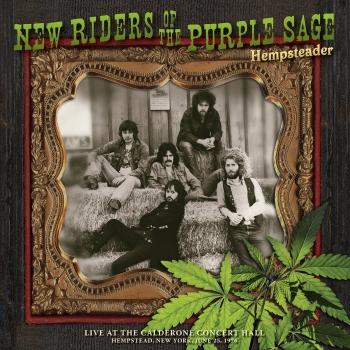New Riders Of The Purple Sage
Biography New Riders Of The Purple Sage
New Riders Of The Purple Sage
In the summer of 1969, John Dawson was looking to showcase his songs while Jerry Garcia was looking to practice his brand new pedal steel guitar. The two played in coffeehouses and small clubs initially, and the music they made became the nucleus for a band—the New Riders of the Purple Sage.
That same year, David Nelson, expert in both country and rock guitar, joined the group on electric lead guitar. Filling out the rhythm section in those early days were Grateful Dead drummer Mickey Hart and engineer Bob Matthews on bass, who was later replaced by Phil Lesh. In 1970, Dave Torbert took over on bass and the New Riders played every chance they got. Soon enough, smoky clubs all over the San Francisco bay area were filling up with whooping, foot-stomping crowds as their music got tighter and more dynamic. They began to tour extensively with the Dead, and in December of 1970, Spencer Dryden, who had previously showed his impeccable drumming style with the Jefferson Airplane, had stepped in on drums.
One of the many gigs with the Dead included the Trans-Canadian Festival Express with Janis Joplin, The Band, and other American and Canadian artists like Ian and Sylvia, who had with them a brilliant, innovative pedal steel player named Buddy Cage. When Garcia’s busy schedule made it increasingly difficult for him to play with the New Riders, the talented Cage was the perfect choice to fill the pedal steel spot. He moved from Toronto where he had been working in Anne Murray’s band, to California in the spring of 1971 to join the New Riders. With the addition of Cage, the New Riders emerged as a fully independent unit. An excitingly creative band with a special brand of music—sweet country harmonies mixed with pulsing rock rhythms.
The New Riders were signed to Columbia Records in 1971 by Clive Davis and their eponymous first album, New Riders of the Purple Sage, was released in September of that year to widespread acclaim. In December, 1971 they played a live radio broadcast with the Dead over WNEW-FM in New York to an audience of millions. In 1972 the pattern of their success continued to grow, with their first European tour followed in June by the release of their second album, Powerglide. They toured the United States extensively in response to increasing demand, and in November, 1972 released their third album Gypsy Cowboy.
In May of 1973, the New Riders appeared on ABC-TV’s “In Concert” program to a nationwide audience. Working hard on the road for much of the year, including gigs with the Dead at Kezar Stadium in San Francisco and R.F.K. Stadium in Washington, DC, they took a brief time out to go into the Record Plant in Sausalito with producer Norbert Putnam. The result was The Adventures of Panama Red, released in September of 1973 and with Peter Rowan’s title track, this became an FM radio staple and the first gold record for the band. In November they embarked on an east coast tour that included them setting the box office record at New York City’s Academy of Music. This tour was recorded for the group’s first live album, Home, Home on the Road, which was produced by Jerry Garcia.
Early 1974 found bassist Dave Torbert wanting to pursue a more rock and roll direction as he left the New Riders to form Kingfish with old friends Matthew Kelly and Bob Weir. Skip Battin, formerly with the Byrds, joined the band on bass as they kept to their solid touring schedule which had become one of the band’s trademarks. In August, 1974, the New Riders gave a free thank you concert in Central Park on a Tuesday afternoon to 50,000 New York fans. Their sixth album, entitled Brujo, was released in October, 1974 and found their recorded sound getting crisper with delicate harmonies and more original songs. ....











